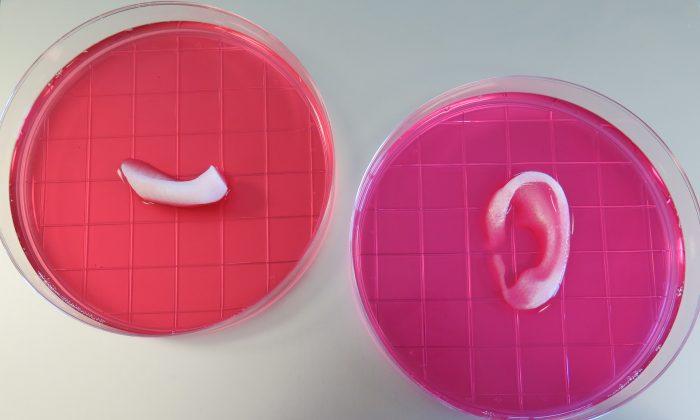Biologists at Wake Forest University have successfully 3-D printed living tissue structures that can function as bone and muscle replacements for humans.
A custom 3-D printer created ear, bone, and muscle structures that, when implanted into animals, matured into functional tissue and developed a system of blood vessels.
“This novel tissue and organ printer is an important advance in our quest to make replacement tissue for patients,” Anthony Atala said in a statement. Atala is the director of the Wake Forest Institute for Regenerative Medicine, where the groundbreaking research occurred.
“It can fabricate stable, human-scale tissue of any shape. With further development, this technology could potentially be used to print living tissue and organ structures for surgical implantation.”

The project was partially funded by the federal government, which is seeking solutions for military injuries. The goal is that 3-D printers will be able to make bioprinted muscle, cartilage and bone for injured soldiers in the future.
The bioprinted tissue was formed using the new Integrated Tissue and Organ Printing System (ITOP). Instead of using laser-induced transfer, the cells are shaped by a biodegradable plastic that gives the growing tissue structure.

A grid of microchannels is embedded in the structure so that blood and nutrients can be delivered to the cells while the blood vessels are still developing in the tissue. This enables larger bioprinted tissue to be used.
As a proof of concept for ITOP, two human-sized 3-D printed ears were attached to mice, and after two months, cartilage tissue and blood vessels had formed. The same procedure was done for pieces of a jawbone, which grew bone tissue after five months of implantation in rats.
The project is still relatively new, and long-term outcomes of the experiments are still being measured.





